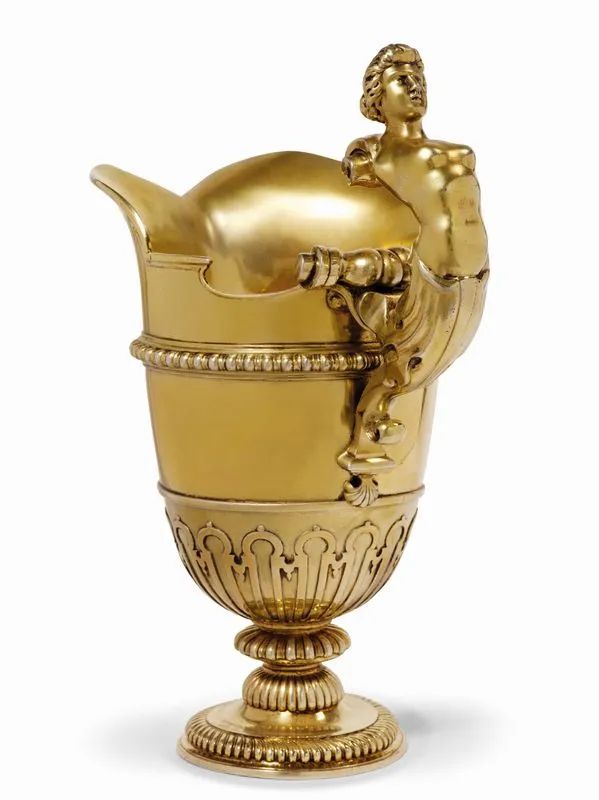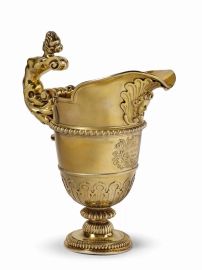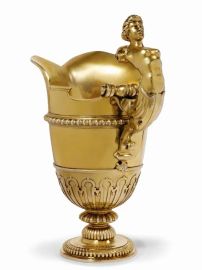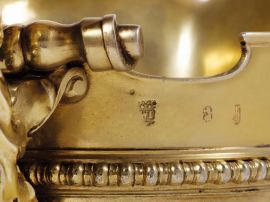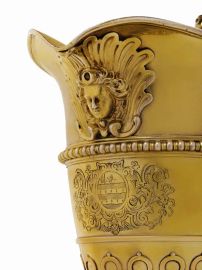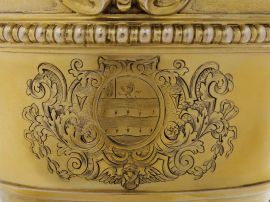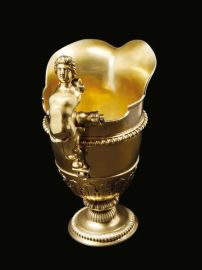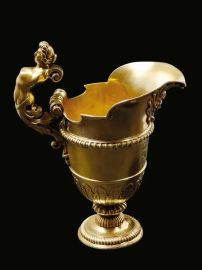David Willaume I
(Metz 1658-London 1744)
The ewer stands on a circular foot with gadrooned rim. The ewer's base is decorated with leaves and the central part is enriched by an engraved coat of arms among foliage motifs. The top of the border is decorated with the face of a putto surrounded by a leaf. The handle, finally chased, has the form of a female figure.
Comparative literature
H. Honour, Orafi e argentieri, Milan, 1972, pp. 138-140.
David Willaume was born in 1658 and was the son of Adam Willaume, goldsmith of Metz in France. His family of protestant origin moved from England to France to flee the persecutions of the Huguenots under Louis XIV.
The earliest document about Willaume in London goes back to 1687 when he received the British naturalization certificate. In 1688 he registered his trade mark, the initial letters D W among fleur-de-lis, and in 1693 he was admitted to the goldsmith's guild. Unlike the other Huguenot goldsmiths, migrated to England, Willaume never took advantage for his activity from the funds made available by the royal generosity. In 1690 he married Marie Mettayer.
He was a refined silversmith who could benefit from the protection of the most important English families, creating for them works with impeccable craftsmanship. In his production this artist followed a "Huguenot style", rich in moulding and in fused elements chased with fantastic figures.
Among the most important works of this artist, still preserved today, there are an ice bucket to keep the wine cold and a wine fountain carried out for the fifth Early of Meath in 1708, later purchased by George II when he still was Prince of Wales. These two works belong today to the collection of the Duke of Brunwick.
Characteristic of Willaume's production is also the ewer, that we propose here (Fig. 1), which is similar to the one stored today in the Victoria and Albert Museum of London.


